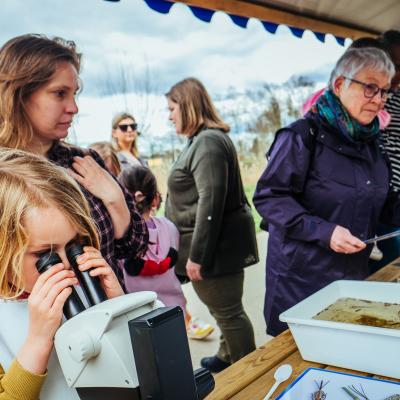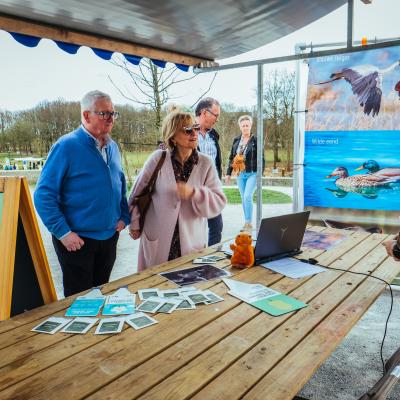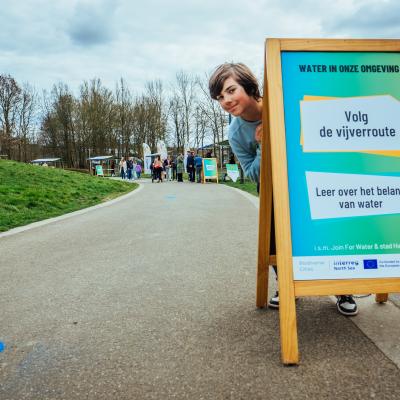For centuries, the Demer River has flowed through Hasselt - not just as a body of water, but as part of the city’s identity. On March 23rd, that connection was renewed and reimagined during Demerdag, an afternoon of hands-on learning and celebration in Kapermolenpark that drew over 1,000 enthusiastic visitors.
As part of its commitment to the Biodiverse Cities project, Hasselt is focusing on strengthening the green-blue corridor along the Demer, an ecological network that runs through the built-up city centre. Kapermolenpark, with its buffer pond and lush green spaces, is a key site in this effort and served as the vibrant setting for the day’s activities.
A Community Celebration of Nature and Knowledge
The event aimed to introduce citizens of all ages to all aspects of the Demer, including the biodiversity living in and around the river. The city’s own biologist, Frederik Thoelen, guided visitors through the species they might encounter near the water: from moorhens and kingfishers to rabbits, beavers and even pipistrelle bats.
Experts from the Provincial Nature Centre invited children and adults alike to search for aquatic insects, while the Flanders Environment Agency shared how they maintain water quality and manage the health of the Demer. Researchers from PXL University demonstrated electric fishing techniques and explored the hidden world of soil biodiversity, comparing soil types found across the park.
Guided walks and exhibitions rounded out the programme. From learning about water’s role in urban resilience with Join For Water, to exploring the river’s historical role with local guides, the event offered something for everyone. Children also enjoyed nature play, crossing stepping stones and walking barefoot paths that brought them closer to the landscape.
Building on a Strong Foundation
The City of Hasselt has long valued the Demer as both a natural asset and a source of civic pride. With initiatives like Biodiverse Cities, that appreciation is being translated into action: restoring habitats, enhancing connectivity for wildlife, and creating new opportunities for people to interact with nature.
The success of Demerdag shows that public interest in biodiversity is growing - and that well-designed, inclusive events (especially those that include children) can spark new awareness and engagement. As the city continues to map opportunities for nature-based solutions along the Demer, its work will be informed by both expert knowledge and the passion of its community.
Hasselt’s journey is just beginning, but it is already a powerful example of how cities can lead the way in creating greener, healthier places - starting with the rivers that run through them.




